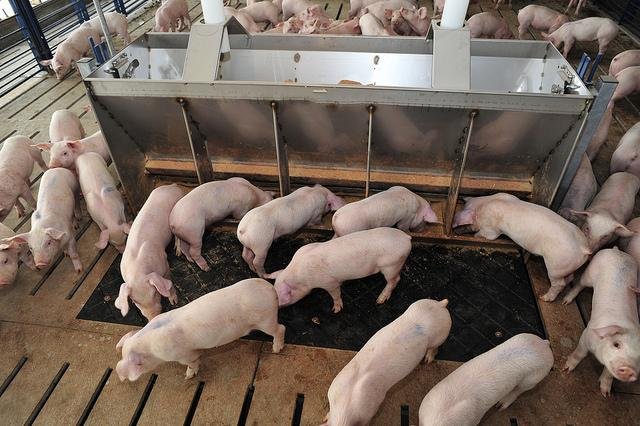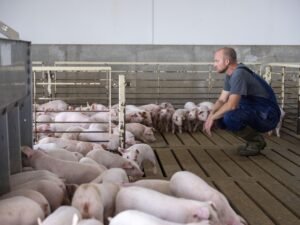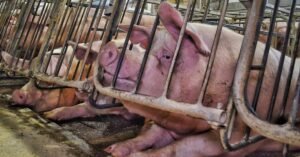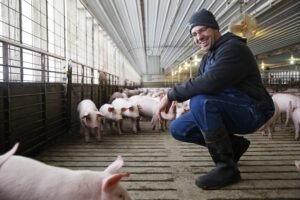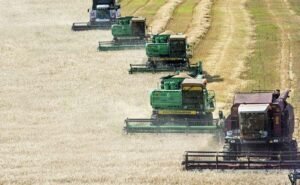The feeder pig market has shown remarkable resilience in recent weeks, contrary to earlier predictions from industry analysts. Cash prices for feeder pigs have climbed to a weighted average of $69.35 per head, representing a substantial increase of $4.98 compared to the previous week’s figures. This upward trajectory comes amid fluctuating feed costs and evolving market dynamics that continue to shape the pork production landscape.
Recent data from the Agricultural Marketing Service indicates that early-weaned pigs (10-12 pounds) reached a cash current weighted average price of $44.81 per head for the week ending April 25, 2025. This marks a significant improvement from the $41.68 reported during the previous week and sits comfortably above the $41.54 recorded during the same period last year. The total receipts for the week totaled 102,475 head, providing a robust sample size for market analysis.
Most noteworthy is the price range observed in larger lot sizes exceeding 1,200 head, where transactions varied between $34.00 and $54.00 per head on a delivered basis. These figures demonstrate the market’s considerable volatility and the premium placed on volume purchases by major operations seeking to maximize economies of scale. Smaller producers, conversely, often face tighter margins due to higher per-unit transportation costs and reduced bargaining leverage.
The formula current prices also merit scrutiny when dissecting the overall market picture. They’ve shown remarkable consistency despite unpredictable input costs. Market observers have noted that the spread between cash and formula prices has narrowed substantially compared to historical averages, suggesting a gradual convergence of pricing mechanisms in the industry that could potentially benefit independent producers in the long run.
The 40-pound feeder pig segment has likewise demonstrated solid performance, with the most recent comprehensive data showing cash prices averaging $82.94 per head, representing a modest increase of $0.13 from the previous week’s reporting period. It’s worth noting that prices in this category have recovered substantially from March levels, when they averaged just $52.05 per head. When adjusted for seasonal patterns, this trajectory possibly indicates strengthening fundamental factors in the hog production cycle.
Feed costs remain a critical variable in determining profitability. According to the latest market reports, the weaner breakeven price stood at $48.73, reflecting an increase of $5.15 for the week, despite feed costs actually decreasing by $1.37 per head. This apparent contradiction underscores the complex interplay between input costs, market prices, and production efficiencies that characterize modern pork production systems.
Futures markets have likewise contributed to producer sentiment. October futures increased by $1.80, providing additional optimism for producers planning their production cycles. This forward-looking indicator suggests continued strength in demand fundamentals, notwithstanding the typical seasonal slackening that often occurs during summer months as consumer preferences shift toward alternative protein sources.
The current robust feeder pig market represents a marked departure from early January conditions, when cash prices for 40-pound feeder pigs averaged $98.98 per head with a range of $85.00 to $107.00. While current prices haven’t yet recovered to those levels, the positive momentum has restored optimism among many producers who had contemplated reducing their breeding herd amid earlier price pressures.
Industry experts attribute the smoking hot feeder pig market to three key factors: reduced breeding herd inventories following earlier liquidation phases, strong export demand particularly from Asian markets recovering from their own production challenges, and the gradual normalization of input costs following earlier inflationary pressures. These dynamics create a favorable environment for well-capitalized operations capable of navigating short-term volatility while positioning for longer-term market opportunities.
As the industry moves deeper into 2025, producers remain vigilant regarding potential headwinds, including regulatory pressures, disease challenges, and macroeconomic factors that could influence consumer spending patterns. Nevertheless, the current price environment provides a welcome respite from earlier challenges and suggests a gradually improving outlook for the remainder of the production year.

